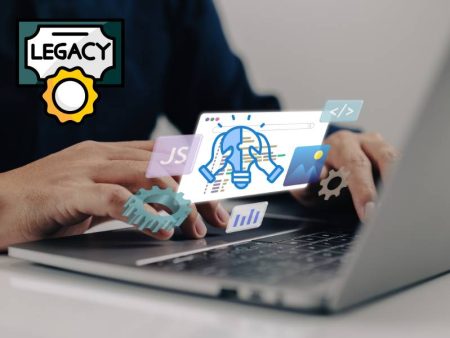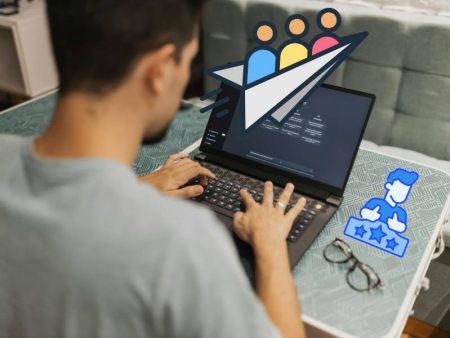Have you ever sat through a 45‑minute lecture and thought, “This could be so much better as a video?” I have—way too many times. Especially when sleepy professors drone on while I’m desperately checking my phone. We all know e‑learning is powerful, but let’s be real: long slideshows and monotone lectures? Snooze city.
Here’s the deal: AI video generators are stepping in as the superheroes of learning. They transform text-heavy content into engaging, interactive, and—even dare I say—fun video lessons. No studio? No problem. No expensive gear? Who needs it.
Let me walk you through why this tech isn’t just a nice-to-have—it’s a fundamental shift for educators, students, and creative learners too.
So, what’s the fuss about?
Picture this: you have a lesson plan, maybe some bullet points or a blog post on, say, “The Water Cycle.” Instead of lecturing, you plug that content into an AI tool, choose your style, hit generate—and voilà, you’ve got a fully narrated, visually rich video explaining evaporation, condensation, and precipitation. With animations. With captions. With pacing that aligns perfectly to your content.
Suddenly, that old text becomes an immersive learning experience. And you didn’t need a microphone, lighting kit, or expensive video editor.
Sounds like sci‑fi? It’s not. This is happening now.
Why educators are buzzing 🐝
- Instant access, zero barriers
No more begging IT for permissions or paying per-seat software licenses. Tools like No Sign Up AI Video Generator let teachers and learners jump straight in. No forms, no trials, no hurdles. Just paste your content, and go.
- Professional output, simplified process
Remember struggling with timelines, transitions, and aligning narration? Now it’s a breeze. The AI intuitively matches voice tone, visuals, and pacing. I’ve seen lesson creators go from idea to publish-ready in under an hour. What used to take days is now done before lunch.
- It’s versatile
Want a friendly avatar explaining algebra? Done. Need historical reenactments of ancient Rome? Sure thing. Want to transform your PDF guides into digestible videos? AI’s got your back. The tool can even upload seamlessly to your LMS or YouTube channel.
Dialogues help, right?
“Hey AI, can you highlight the main point here?”
“Sure—let’s zoom into those bullet points with graphical pop‑ups.”
“Cool, but can we slow down a bit for language learners?”
“On it—captions added, pacing adjusted.”
This back-and-forth makes the tool feel like your digital teaching assistant. You’re still in control—you’re just not doing all the grunt work.
But isn’t it too corporate-looking?
Not at all! You see, these generators are flexible. If you want animated cartoons with bright colors for younger students, you can. If your audience is professionals, you can opt for minimalist black-and-white text slides with a calm narrator. Choose avatars that are inclusive, choose language learners tools, even customize music that isn’t distracting. It’s about tone, not template.
Some tools even offer AI Video Generator No Watermark options—so the final video is clean, branded by you, not carrying the tool’s logo. It’s smart, thoughtful, and respectful to both your learners and your brand.
A story: Emma the History Teacher
Emma’s a history teacher in a small town school. Pre‑pandemic, she loved storytelling—but Covid changed everything. Classroom engagement dropped, and she knew she had to pivot fast. She started using an AI video tool. In week one, she made a 5‑minute video on the French Revolution—complete with avatars debating Robespierre. Kids watched it at home, thrived on quizzes, and discussions exploded in class the next day.
Emma said, “It feels like my passion got amplified. I’m making connections with students I never had before.” She told me this over a late‑night Zoom call—and honestly, I teared up a little. That’s when I realized: this tech isn’t just flashy—it empowers.
Real talk: It has flaws
I won’t sugarcoat it. Some points of friction exist:
- Monotony risk: Without human flair, AI voices can feel flat. But simple edits—intonation tweaks, music volume—elevate that.
- Mispronunciations: Especially long words or niche terms. But most tools let you correct them manually.
- Copyright caution: Images, music—they must be properly licensed. Don’t rely only on default backgrounds; double‑check usage rights.
But guess what? None of these roadblocks are deal‑breakers. A little human oversight goes a long way in polishing what the AI builds.
What learners say
Students consistently report higher comprehension and engagement. One language learner said, “Watching short videos helped me retain grammar points way better than those pdf worksheets.” Another high schooler told me, “Honestly, it felt like Netflix drama, not school—so I watched it twice.”
They’re not buying it—they’re learning from it. And that’s everything.
You don’t need a film degree (or gear)
Here’s the crazy part: to do this, you don’t need anything fancy. No cameras, no mics, no editing software. Most tools run right in your browser. All you need is content and maybe a half-hour to tweak options before hitting generate.
And if you’re thinking “Whoa, where’s the authenticity? I want me in the video!”—you still can show your face, record your own voice, add custom slides. The AI complements, not replaces, your personality. It’s about amplification, not substitution.
Tips for teachers and course creators
- Start with bite‑sized chunks
Break topics into 3‑5 min videos—easy to digest and perfect for mobile learners. - Embed your personality
Add anecdotes: “When I was in college…” or “One day, I spilled coffee during class…” It makes AI-generated content you. - Mix visuals
Lecture slides, diagrams, stock footage, avatars. Variety = retention. - Include interactive inserts
Pop‑up quizzes, pause prompts like “Think for a moment: what would you do here?” This boosts engagement. - Review before publish
Watch videos attentively. Fix pacing, correct voice issues—small edits lead to big polish.
What about mobile learners?
This stuff truly shines on phones. Students working parents—heck, anyone crunched for time—can digest lessons during commutes or grocery lines. When videos are short, dynamic, and captioned properly, they fly in mobile feeds. It’s learning on the go, no school desk required.
Beyond classrooms
This tech’s potential extends links to nonprofits, corporate training, DIY channels, even mental health advocates. Nonprofits can build awareness videos in minutes. Companies can flip internal manuals into tutorials. And people delivering personal stories—like mental health tips—can convert empathy into impact, fast.
It’s not limited to schools. It’s about voices wanting to be heard—and now seen.
So… is it a game‑changer?
Absolutely—but only if used thoughtfully. At its best, AI video generation doesn’t steal your voice; it amplifies it. It’s not a shortcut—it’s leverage. Suddenly your content, experience, and passion become a format that’s accessible, engaging, and future-ready.
This isn’t just a new tool; it’s a catalyst for how we teach, learn, and connect. If you’re an educator, a coach, a creator—heck, anyone with knowledge—you owe it to yourself and your audience to give this a shot.
TL;DR
- AI video generators let you convert text into dynamic lessons—no tech hurdles.
- Tools like No Sign Up AI Video Generator and AI Video Generator No Watermark get rid of friction and branding barriers.
- Learn tech fast, fix mild flaws manually, and inject your style.
- Students love it, engagement soars, mobile learning becomes real.
- Anyone with expertise can reach an audience in vibrant new ways.
So, what do you think—ready to turn your next lesson into a lively video? Or maybe you’ve tried it already and want to compare notes. Whatever’s on your mind, drop a comment below. I’m here, excited, curious—and yes, fired up to learn with you.
Happy teaching (and video‑making)! ✨


